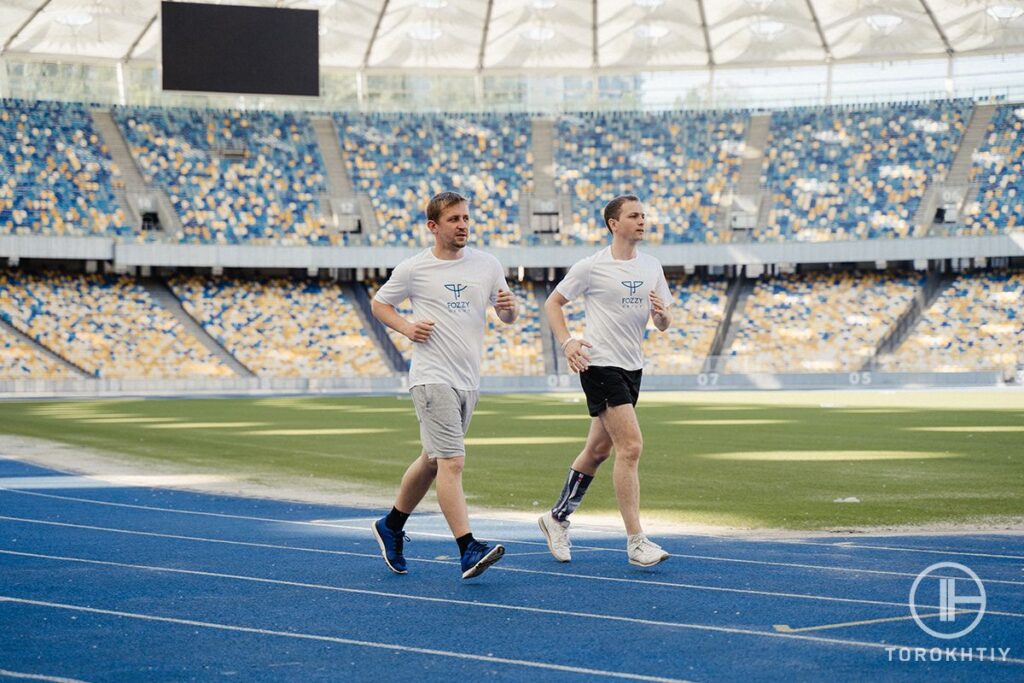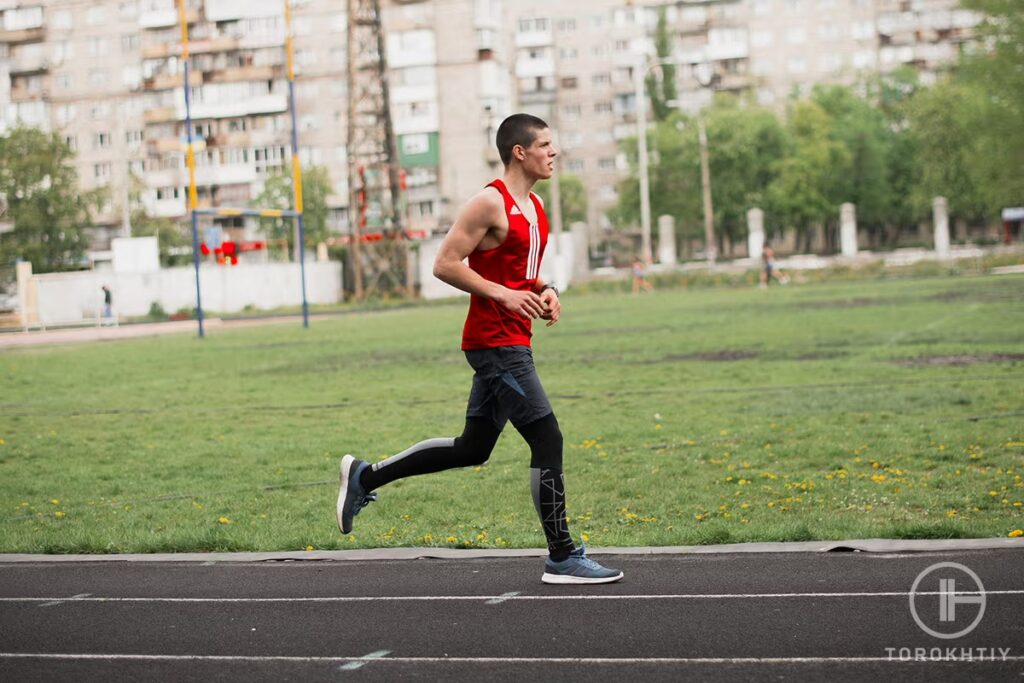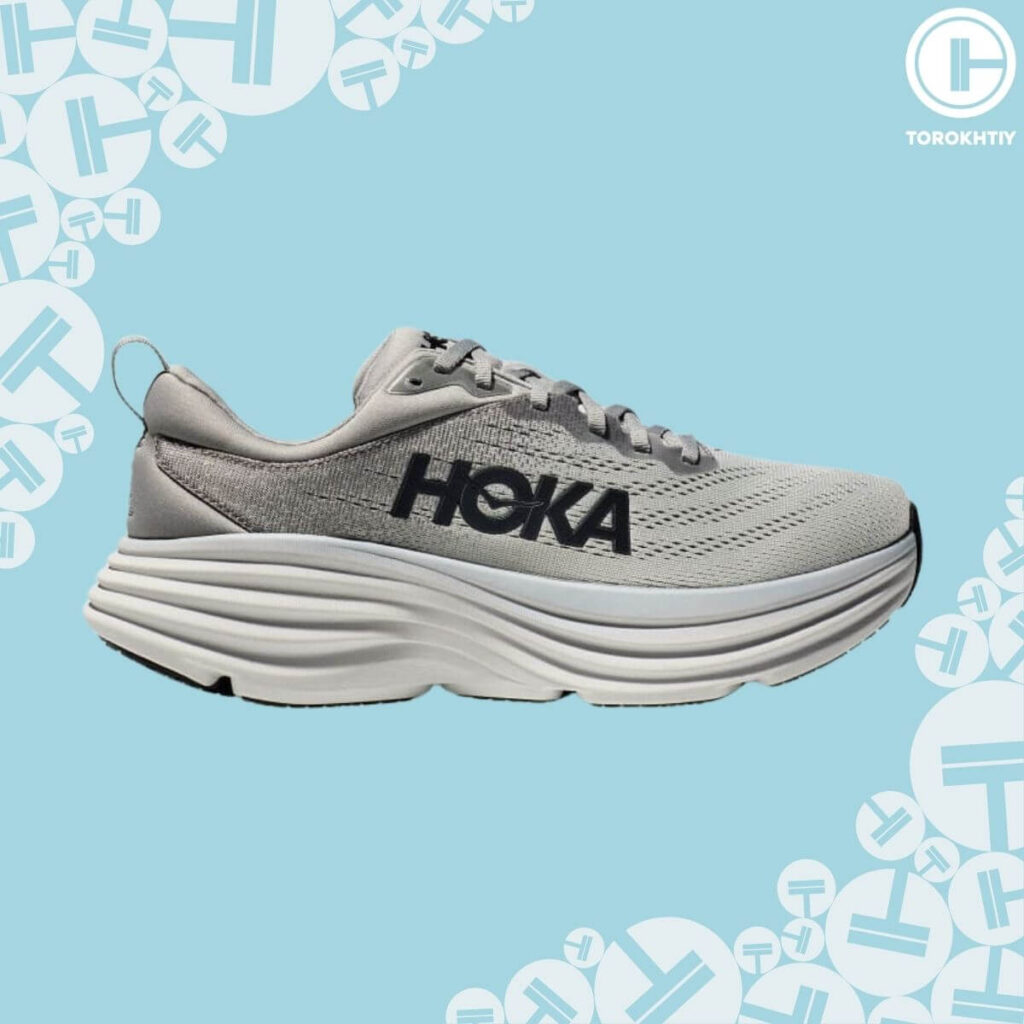Is a 6 Minute Mile Good Time? 6-Week Training Plan
Author:
Reviewed by:
(Head of Sport Science, 20 years of Oly Lifting experience, PhD Sport Science)
Unlock your full potential by engaging with our experts and community! Have questions about your fitness journey or looking for expert advice on weightlifting techniques? Don’t hesitate — leave a comment below and Oleksandr Zagrebelnyi will provide a personalized answer and insights to help you reach your goals.
Torokhtiy is reader-supported. Some links are affiliate links, and we may earn a commission at no extra cost to you. See our disclosure page for details.
Is a 6 minute mile good result for you? Are you looking to improve your running performance and complete 1 mile in 6 minutes?
Achieving a 6-minute mile is one of the most meaningful goals that a runner can pursue.
This blog post covers all the information you need in order to achieve this running goal, including details about pace, speed, and training. Read on for more details about improving your run times and reaching your goals.
How to Achieve a 6-Minute per Mile pace? – Pacing, speed, and training all play an important part in being able to run 1 mile in 6 minutes or less. Interval training, tempo runs, hill sprints/repeats, and fartlek runs help develop the cardiovascular fitness and speed as well.

How Fast Is a 6-Minute Mile?
A 6 minute mile is a benchmark that many runners aspire to reach. It is commonly used as an indicator of a runner’s fitness level.
Is a 6-minute mile fast? A recreational runner running a 6 minute mile is considered to have good speed and endurance. This pace, which is roughly 16 km/hr (10 mph), can be achieved with dedication and the right training program.
The average runner can expect to run a 10-minute mile, so breaking the 6-minute mile is a notable accomplishment for an amateur athlete.
Is a 6 Minute Mile a Good Time?
More experienced runners—such as semi-professionals or elite athletes—would usually be expected to run at faster than a 6-minute-mile pace. The key factors that influence how fast you can cover 1 mile include your pace and your training levels.
Running Time Calculator: Achieve A 6-Minute Mile
This running time calculator is based on a calculation formula that considers distance, gender, training level, and age. Use this calculator to estimate the approximate time needed to cover the distance, understanding which metrics to improve for achieving your goal of running a mile in 6 minutes.
Running Time Calculator
Result:
2 Factors that Influence the Running Speed Needed to Cover 1 Mile in 6 Minutes
Pace and training level are the 2 main factors that play a vital role when running a sub-6-minute mile.
1. Pace
If you were to run one mile in 6 minutes, then your pace would be 10 miles per hour (mph).
Pro Tip
One important way runners can improve their pace is by including interval training in their workout routines, which involves alternating between fast and slow speeds in order to build up strength and endurance.
Running Coach Nike Run Club Kyiv
2. Training
Achieving a 6-minute mile requires a significant commitment to training. Various factors contribute to a runner’s speed over 1 mile, including endurance, conditioning, and stamina, which should all be incorporated into regular workouts for best results. You need consistent practice to build up the required capabilities, like aerobic capacity, strength, and good form, which will help you reach your goal mileage time.
How to Train for a 6-Minute Mile: 4 Best Workouts
If you want to know how to run a 6-minute mile, you need a training plan. Training for a 6-minute mile requires different kinds of running workouts that develop cardiovascular fitness and speed:
1. Interval Training
Interval training is a type of running workout that involves alternating periods of high-intensity bursts and low-intensity recovery runs. If you want to increase your speed, you might want to try 400/600/800m speed intervals, depending on your current training level.

2. Tempo Runs
Tempo runs are a powerful form of running training designed to improve endurance, speed, and distance. With these sustained, faster-paced runs, runners will feel both mental and physical benefits. Tempo runs help build the “engine” for all types of athletic efforts by teaching the body how to efficiently handle greater physical stress.

3. Hill Sprints and Repeats
Hill sprints are an essential component of training for runners looking to improve their speed and endurance. This type of interval workout can be done either uphill or downhill and typically lasts from 10 to 60 seconds.
Hill sprints are focused on improving strength, endurance, form, stride length, frequency, cadence, and overall running mechanics at any pace.

4. Fartlek Runs
Fartlek training refers to using varying speeds throughout a run. It is a form of interval training where the runner remains in constant motion but alternates periods of fast and slow pace.
During this type of training, the length and intensity of speed and rest periods can be adjusted according to your fitness level and goals.

6-Week Training Plan to Run a 6-Minute Mile
Here is a comprehensive 6 minute mile training plan to get on track with your goal:
Week 1
The goal of the first week of a 6 minute mile training plan is to establish baseline fitness. During week one, it’s important to incorporate workouts such as tempo runs, easy runs, and speed drills (leg hops, switches, wall drills, etc.)
Tempo runs should typically be completed at around a 7-minute-per-mile pace in order to prepare your body for the faster speeds you’ll attempt in later weeks.
Easy running can be done anywhere from 8 to 10 minutes per mile while gradually increasing the distance over time as you become more comfortable with running longer.
| Monday | Tuesday | Wednesday | Thursday | Friday | Saturday | Sunday |
|---|---|---|---|---|---|---|
| Rest day | Tempo run | Strength training | Speed drills | Rest day | Easy pace recovery run | Long run |
Week 2
The second week of the 6-week training plan involves two easy runs with stride-outs (100m accelerations). These runs should help build up endurance and increase running efficiency.
Stride-outs improve contact time (the length of time your feet are on the ground) between footfalls, making you faster and stronger, while also helping create a smooth cadence between strides thus allowing you to maintain energy over longer distances.
| Monday | Tuesday | Wednesday | Thursday | Friday | Saturday | Sunday |
|---|---|---|---|---|---|---|
| Rest day | Easy run with stride outs | Strength training | Easy run with stride-outs | Rest day | Easy pace recovery run | Long run |
Week 3
Week 3 focuses on endurance and incorporating different kinds of speed workouts. On Tuesday, you should focus on intervals, running 4 x 3 minutes at 90% effort with 1 minute of walking in between.
Thursday has a speed and strength track workout featuring 8 x 50m strides, where the runner must run at near top speed, but not exceed 21 seconds per 100m pace time.
Saturday works towards sustaining a fast pace for a 5K distance by doing two laps of warmup, then five repeated 600-meter runs, with each lap timed. Try to maintain a steady 90-second per lap pace, followed by two more laps of cool-down after the five reps are done.
| Monday | Tuesday | Wednesday | Thursday | Friday | Saturday | Sunday |
|---|---|---|---|---|---|---|
| Rest day | Intervals | Strength training | Speed and strength track workout | Rest day | Track running | Long run |
Week 4
During the fourth week of training to run a 6-minute mile, you will continue incorporating speed workouts into your plan. The fourth week will include a harder session of interval running, such as 10X400m intervals at 90-100% effort with 1-minute rest periods between the intervals, followed by an easy jog or walk recovery period after completing all 10 sets.
Other days can involve an easy-paced 4-mile run, coupled with some strides and hill running.
| Monday | Tuesday | Wednesday | Thursday | Friday | Saturday | Sunday |
|---|---|---|---|---|---|---|
| Rest day | Intervals | Strength training | Easy-pace 4-mile + strides | Rest day | Hill reps | Long run |
Week 5
Week 5 of the running plan to reach a 6-minute mile is all about speed development, pushing beyond your comfort zone, and optimizing performance. This week requires more track sessions, as you’ll be running 400m intervals at goal pace (1 minute 29.5 seconds per lap), with rest periods or easy jogging for recovery.
Your maximum pace shouldn’t exceed 21 seconds per 100m if you want to push yourself without overdoing it. You should also incorporate strength exercises, such as squats, lunges, and bridges, to boost power output and increase lean muscle mass.
Finish off with short sprints to make sure that your body can handle the strain of consistent fast-paced exercise without risking injury.
| Monday | Tuesday | Wednesday | Thursday | Friday | Saturday | Sunday |
|---|---|---|---|---|---|---|
| Rest day | Track intervals | Strength training | Hill reps | Rest day | Sprints | Long run |
Week 6
The final stretch of the 6-week training plan begins with a speed and strength track workout that focuses on high-intensity interval runs and weighted squats.
During this week, you should aim for three track workouts per week and as much as 30 miles in total mileage.
The goal is still the same—achieve a 400m pace of 90 seconds per lap (or whatever your target pace will be). Maintaining your pace means avoiding pushing yourself beyond 21 seconds per 100m and gradually building up strength by adding weight training.
| Monday | Tuesday | Wednesday | Thursday | Friday | Saturday | Sunday |
|---|---|---|---|---|---|---|
| Rest day | Speed and strength track workout | Strength training | Track intervals | Rest day | Speed and strength track workout | Long run |
How to Run a 6-Minute Mile Faster?
To reach the goal of running a 6-minute mile, runners should incorporate proper warmup and cool-down routines, as well as nutritious meals and hydration into their workout routine.

1. Proper Warmup and Cool-Down Routines
Taking proper care of your body before and after running a 6-minute mile is essential for optimal performance.
Pre-run warmup exercises, such as 200- or 400-meter repeats at a pace faster than a 6-minute mile, can increase endurance, prevent injury, and help the body to be better prepared prior to the main effort.
Additionally, post-run cool-downs are important for avoiding muscle tightness, which can lead to further problems. A slower paced run or walk helps gradually reduce heart rate and ease the body back into a resting state so it can begin recovery more efficiently.
2. Nutrition and Hydration Tips for Optimal Performance
A balanced diet with carbohydrates, protein, and healthy fats is necessary to provide the energy needed to sustain rigorous running workouts.
Pro Tip
A meal or snack that includes complex carbohydrates and proteins an hour before exercising helps provide fuel for long runs and aids muscle recovery after workout.
Running Coach Nike Run Club Kyiv
Additionally, staying hydrated before, during, and after runs is important, as dehydration can result in fatigue or dizziness during exercise.
3. Weekly Mileage and Workouts
Training to run a 6-minute mile requires consistent mileage and targeted workouts that help build speed, power, and endurance. Running three times per week at an easy pace (with rest days in between) is vital for any successful training plan.
Aim for 60-90 minutes of total running time during each session, but break it up if necessary, according to your available time and energy level. As you progress with consistent runs, gradually increase your weekly mileage and incorporate a variety of interval-style workouts into your routine.
4. Incorporating Speed Work and Intervals
Speed work and intervals are key elements in a runner’s training schedule, as they help improve overall running performance.
Focus on different aspects of fitness, such as improving strength, endurance, speed, or power, to keep your body well-conditioned for the distance you intend to cover. Training in different speed zones can help runners boost their endurance capacity by pushing themselves out of their comfort zone and helping maximize oxygen uptake (VO2max).
5. Strength Training for Runners
Developing muscular strength and power through resistance exercises helps build endurance for longer running distances. At the same time, it improves the body’s ability to generate and maintain the high speed needed for quick sprints over short distances. These are both key elements for success in achieving a 6-minute-mile pace.
Adding strength exercises to regular training sessions specifically targets muscles that are used during high-speed bursts, such as glutes, quads, hamstrings, calves, and core. This not only helps strengthen these muscles, but also enhances cardiovascular fitness.
Hoka Bondi 8
- Material: Breathable and supportive mesh upper
- Sole Material: Full-length EVA midsole for maximum cushioning
- Outsole (tread feature): Durable rubber outsole with a unique lug pattern
- Drop: 4mm
- Season: Suitable for all seasons
- Special Features: Exceptional cushioning and comfort
- Size: Available in various sizes
- Type: Maximum cushioning running shoe
If you want excellent running or walking shoes or just footwear you’ll be comfortable in, you can’t go wrong with the Hoka Bondi 8.
It’s been upgraded and now they have lighter, softer materials and a new extended heel design. The heel design gives a super soft, balanced feeling from th emoment your heel hits the ground to when you push off with your toes.
As far as the weight goes, it’s around 10.80 ounces, and the heel drop is 4 mm. They’re not too heavy and the lower drop is a good balance between cushioning and feeling connected to the ground.

The Bondi 8 is focused on cushioning and keeps things simple. There’s a good amount of support without any extra stuff that you don’t really need and that would only jack up the price. Take the rear crash pad, for example – it makes for a soft, smooth ride, which is perfect if you like to run outdoors.
The upper part is made of engineered mesh, which is breathable and keeps your feet cool and dry. The tongue and collar have memory foam and mold to your foot shape. All of these features make the fit snug but flexible, which is exactly what you would want.
The Bondi 8 is eco-friendly because it uses recyclable materials in parts like the mesh and the sockliner. Plus, the shoes are completely vegan, which (if that’s important to you) is nice!
FAQ
How Do I Assess Whether I Can Run 1 Mile in 6 Minutes?
This depends on your current fitness level, but a good rule of thumb is to be able to run a mile in between 8 to 9 minutes before attempting any form of speed work. If you can manage that, then gradually increase your pace by using interval training or fartlek runs.
How Many Miles Per Week Do You Need to Run to Build up to a Mile In 6 Minutes?
It typically takes at least 6 weeks of dedicated endurance and speed training to get your body ready to run a 6-minute mile. On average, you need to run about 30-40 miles a week to succeed.
What Percentage of the Population Can Run a 6-Minute Mile?
Only 5% of the population has run a 6-mile mile, due to the difficulty of the feat.
conclusion
Running a 6-minute mile is a proud achievement for recreational and elite runners alike. A lot of dedication and training are required to reach this goal. The hard work can pay off with improved physical conditioning, faster running speeds, cardiovascular health, and reduced stress.
If you want to build up to running 6-minute miles, you need to add different kinds of workouts to your training plan. Focus on speed drills, tempo runs, different track training sessions, and hill reps to boost speed and stamina.
Try our 6-week training plan and see what you can do!
What is your 1-mile time? Please share your experience in the comments below.
Also read:
References:
- The effects of training with high-speed interval running on muscle performance are modulated by slope // The Physiological Society: https://physoc.onlinelibrary.wiley.com/doi/10.14814/phy2.14656
- Runner’s Diet // Johns Hopkins Medicine: https://www.hopkinsmedicine.org/health/wellness-and-prevention/runners-diet
- How to Know If You’re Staying Hydrated While Running // HSS | Hospital for Special Surgery: https://www.hss.edu/article_staying-hydrated-while-running.asp
- Relationship Between Strength Skills Performance and Speed Running Performance // European Journal of Multidisciplinary Studies: https://revistia.com/files/articles/ejms_v8_i1_23/Selenica2.pdf
- Photos are made by Torokhtiy Media Team, ArtPhoto_studio Freepick
Why Trust Us?
With over 20 years in Olympic weightlifting, strength training, nutrition coaching, and general fitness our team does its best to provide the audience with ultimate support and meet the needs and requirements of advanced athletes and professional lifters, as well as people who strive to open new opportunities and develop their physical capabilities with us.
By trusting the recommendations of our certified experts in coaching, nutrition, and sports training programming, as well as scientific consultants, and physiotherapists, we provide you with thorough, well-considered, and scientifically proven content. All the information given in the articles concerning workout programming, separate exercises, and athletic performance, in general, is based on verified data.
The product testing process is described in more detail here.
Oleksandr is a running coach and member of the Nike Run Club coaching team for 8 years. A participant in national and international competitions at distances from one kilometer to the ultra trail. Owner of mountain trail running camps. Nowadays Oleksandr is responsible for creating running training programs for athletes of various levels, coaching personally offline and online, conducts trail running camps in the mountains, participates in competitions.
Reviewed by: Sergii Putsov
Head of Sport Science, PhD
Best Results: Snatch – 165 kg,
C&J – 200 kg
Sergii Putsov, Ph.D., is a former professional weightlifter and National team member, achieving multiple medals in the 94 kg weight category at national competitions. With a Master’s degree in “Olympic & Professional Sport Training” and a Sport Science Ph.D. from the International Olympic Academy, Greece, Sergii now leads as the Head of Sport Science. He specializes in designing training programs, writing insightful blog articles, providing live commentary at international weightlifting events, and conducting educational seminars worldwide alongside Olympic weightlifting expert Oleksiy Torokhtiy.





Still have questions after reading our article? Unlock your full potential by engaging with our experts and community! Don’t hesitate — leave a comment below and Oleksandr Zagrebelnyi will provide a personalized answer and insights to help you reach your goals.